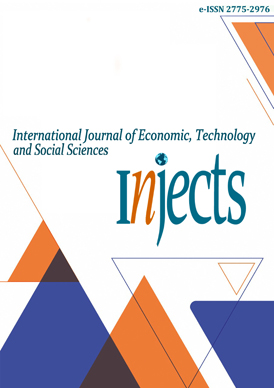Differences in C/N ratios and nutrient content of N, P, and K, in Making Compost from Rice Straw Waste with Trichoderma sp Activator
DOI:
https://doi.org/10.53695/injects.v3i2.856Abstract
This study aims to determine differences in nutrient levels in the manufacture of compost from rice straw waste with Trichoderma sp. activator. to the value of the C/N ratio and the nutrients N, P, K. The superiority of Trichoderma sp. Among others, it is easy to apply, does not produce toxins, is environmentally friendly, does not disturb organisms in the soil and does not leave residues in plants or soil. In making compost in compost tanks, the use of Trichoderma sp with a combination of ash and lime (JKAL) can increase the content of C-Organic, N-Total, Phosphorus and Potassium with respective values ??of 20.34%, 0.90%, 0 , 40% and 0.40%. The lowest C/N content was shown in the use of Trichoderma sp added with Ash (JAL) which was 22.0. In the treatment of making compost in containers, the use of Trichoderma sp with a combination of ash and lime (JKAD) was able to increase the content of C-Organic, N-Total and Phosphorus and was able to reduce the value of C/N with an average value of 19.8% respectively , 21.67%, 0.18% and 21.67%. The highest average value of Potassium (K) content shown in the JAD treatment was 0.46%.Downloads
Published
2023-04-17
How to Cite
Laode Muh Asdiq Hamsin Ramadan, Nurmaranti Alim, Selfin Tala, & Br Barus, M. D. (2023). Differences in C/N ratios and nutrient content of N, P, and K, in Making Compost from Rice Straw Waste with Trichoderma sp Activator. International Journal of Economic, Technology and Social Sciences (Injects), 3(2), 365–374. https://doi.org/10.53695/injects.v3i2.856
Issue
Section
Articles
License

This work is licensed under a Creative Commons Attribution-ShareAlike 4.0 International License.




